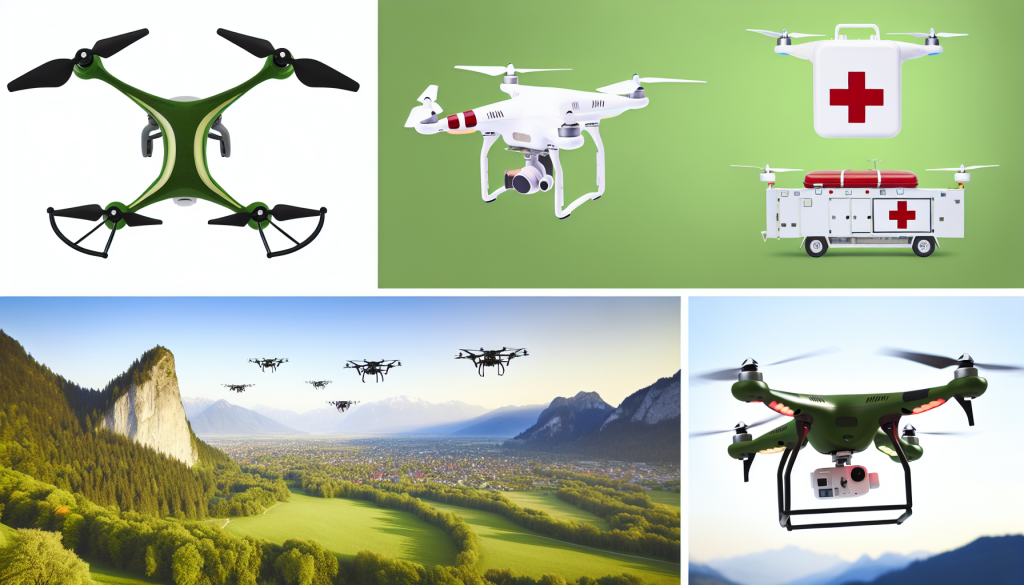Understanding the Impact of Drones in Modern Warfare
Drones, or unmanned aerial vehicles (UAVs), have transformed the landscape of military operations and surveillance, drawing both admiration and criticism. This article explores the different dimensions of drone technology, its implications, and the ongoing debates surrounding its use.
The Evolution of Drones
Drones have a rich history that dates back to the 19th century. The first recorded unmanned air strike occurred in 1849 when the Habsburg Austrian Empire deployed 200 pilotless balloons against Venice. Fast forward to the 20th century, and the development of electronic drones took shape during World War II, with models like the British “Queen Bee,” used for target practice.
The modern military drone became prominent in the late 20th century. The MQ-1 Predator, introduced in 1994, and its successor, the MQ-9 Reaper, significantly changed how missions are executed in conflict zones. These drones are now equipped with advanced surveillance capabilities and weapon systems, enabling targeted strikes with minimal human presence on the ground.
What Makes Drones Effective?
One of the main advantages of drones is their ability to conduct operations with precision while reducing risk to military personnel. Drones can fly for long missions—up to 27 hours for systems like the Reaper—allowing forces to monitor and engage targets without the complexities and dangers of traditional military operations.
This capability is particularly crucial in regions where armed conflict rages and ground operations could lead to substantial civilian casualties and geopolitical fallout. Drones can operate effectively over challenging terrains and densely populated areas without the immediate threat of warfighters being killed or taken hostage.
The Role of Drones in Counterterrorism
In the post-9/11 landscape, drone strikes have served as a central counterterrorism tool for the U.S. and allied nations. They are seen as a means to neutralize threats from organizations like al-Qaeda and ISIS without deploying large numbers of ground troops. Reports indicate that drone strikes in countries like Afghanistan, Pakistan, and Yemen have killed thousands of militants, curtailing potential terrorist plots against Western targets.
U.S. officials have argued that these targeted strikes have not only disrupted terrorist operations but also saved innocent lives by eliminating threats before they could materialize. However, the effectiveness of this program continues to be debated.
The Controversy Surrounding Civilian Casualties
While drones offer advances in precision strike capabilities, they also raise significant ethical and legal concerns. Civilian casualties resulting from drone strikes have provoked public outrage and international criticism. Between 2002 and 2019, thousands of civilians, including children, lost their lives due to these operations, sparking debates about the morality and legality of such actions.
Human rights organizations have called attention to the lack of transparency and oversight associated with drone strikes, citing the psychological toll on both communities affected and those operating the drones. The fear and trauma inflicted on populations in areas where drone strikes occur can lead to long-lasting psychological effects, complicating the rebuilding of trust and stability in those regions.
Legal and Ethical Challenges
The legality of drone strikes is fraught with challenges. Critics argue that by conducting targeted killings outside declared war zones, governments violate sovereignty and international law. The debate centers on whether such actions constitute extrajudicial killings, given that the targeted individuals often lack due process.
Furthermore, the criteria used to classify a target as a legitimate threat are opaque, leading to significant ambiguity and potential misuse of drone technology. The process by which individuals are placed on “kill lists” raises fundamental questions about accountability and oversight.
Transparency and Accountability
Calls for increased transparency around drone operations have gained traction. Advocacy groups push for disclosures regarding the legal basis for strikes, criteria for target selection, and casualty assessments. In response to public pressure, some administrations, like that of President Obama, initially aimed for greater accountability, but subsequent administrations have exhibited varying degrees of compliance with such demands.
Recent policies have attempted to ensure better oversight, requiring higher standards of certainty that no civilians will be harmed. Nevertheless, the revocation of previous transparency measures has been met with criticism, reflecting the ongoing struggle between national security interests and the right to know for citizens.
Future Innovations in Drone Technology
As technology evolves, so does the sophistication of drone systems. There are discussions about integrating artificial intelligence to enhance decision-making processes, extending operational ranges, and further automating functions. While these advancements may increase efficiency, they also pose concerns about ethical considerations and the potential for autonomous weapons that could make life-and-death decisions without human intervention.
In summary, drones have reshaped the battlefield, offering new strategies for monitoring and engagement. Their consequential role in modern military tactics and counterterrorism is undeniable, yet they also introduce a complex web of ethical, legal, and humanitarian issues that continue to spark debate among governments, organizations, and citizens alike.

